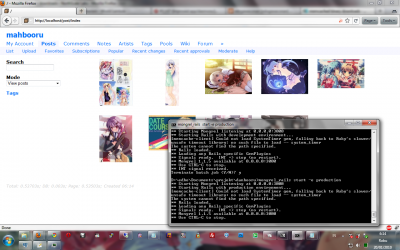WordPress Multisite, previously known as WordPress MU (Multi User), is an application which allows hosting multiple WordPress blogs with just one installation. Instead of creating copies of WordPress for each users’ blogs, one can use one installation of Multisite to be used by multiple users, each with their own blogs. Personal/custom domain is also possible as used for this blog (this blog’s master site is genshiken-itb.org). Too bad, the official documentation only provided guide for installing on Apache. If you haven’t known, I usually avoid Apache – I simply more proficient with nginx. Of course, this blog is also running on nginx therefore it’s perfectly possible to run WordPress Multisite on nginx.
At any rate, reading the official documentation is still a must and this post will only cover the nginx version of Apache-specific parts (namely Apache Virtual Hosts and Mod Rewrite and .htaccess and Mod Rewrite) and only for subdomain install. Subdirectory one will or will not follow some time later.
Assuming you have working nginx and php-cgi (with process manager like php-fpm or supervisord), for starter you’ll want to create a specific file for this WP install. Let’s say this file named app-wordpress.conf. Obviously you have put WordPress installation somewhere in your server. In this example I put the files in /srv/http/genshiken-itb.org/.php/wordpress. Its content:
client_max_body_size 100m;
root /srv/http/genshiken-itb.org;
location /. { return 404; }
location / {
root /srv/http/genshiken-itb.org/.php/wordpress;
index index.php;
try_files $uri $uri/ /index.php?$args;
rewrite ^/files/(.*) /wp-includes/ms-files.php?file=$1;
location ~ .php$ {
try_files $uri =404;
fastcgi_pass unix:/tmp/php-genshiken.sock;
fastcgi_read_timeout 600;
fastcgi_send_timeout 600;
fastcgi_index index.php;
fastcgi_param SCRIPT_FILENAME $request_filename;
include fastcgi_params;
}
}
Simple enough. Actually, it’s exact same with normal WordPress install except one extra line:
rewrite ^/files/(.*) /wp-includes/ms-files.php?file=$1;
And you’re set. Note that I set fastcgi timeouts higher than default to work around the slow performance of Amazon EC2 Micro Instance. Should only needed on network upgrade and massive blog import.
Anyway, in your main nginx.conf file, put:
server {
listen 80;
server_name *.genshiken-itb.org;
include app-wordpress.conf;
}
In proper place. The usefulness of separate file for WordPress configuration will become apparent once you want to tweak performance for some blogs. I’ll explain that later if I feel like to.
